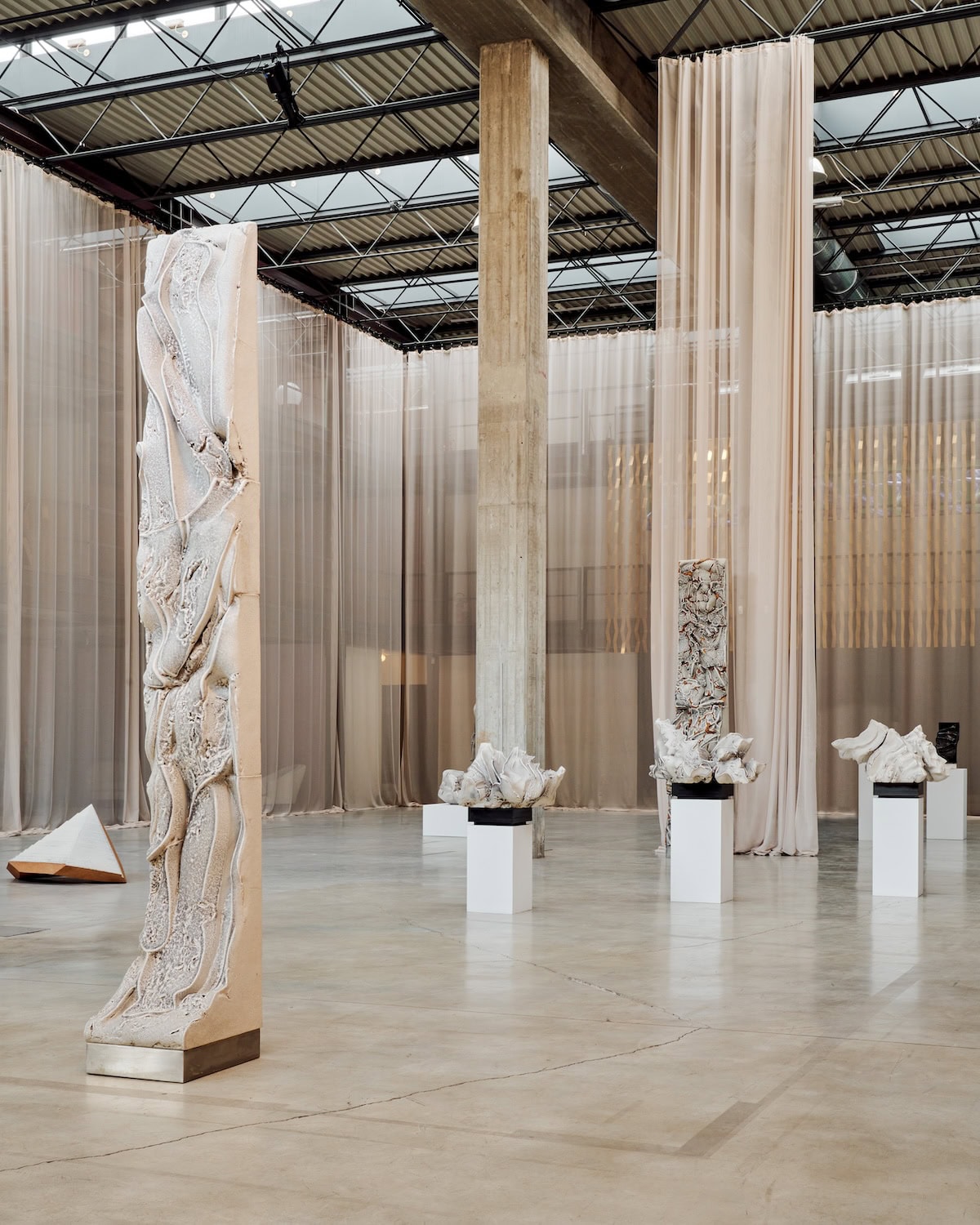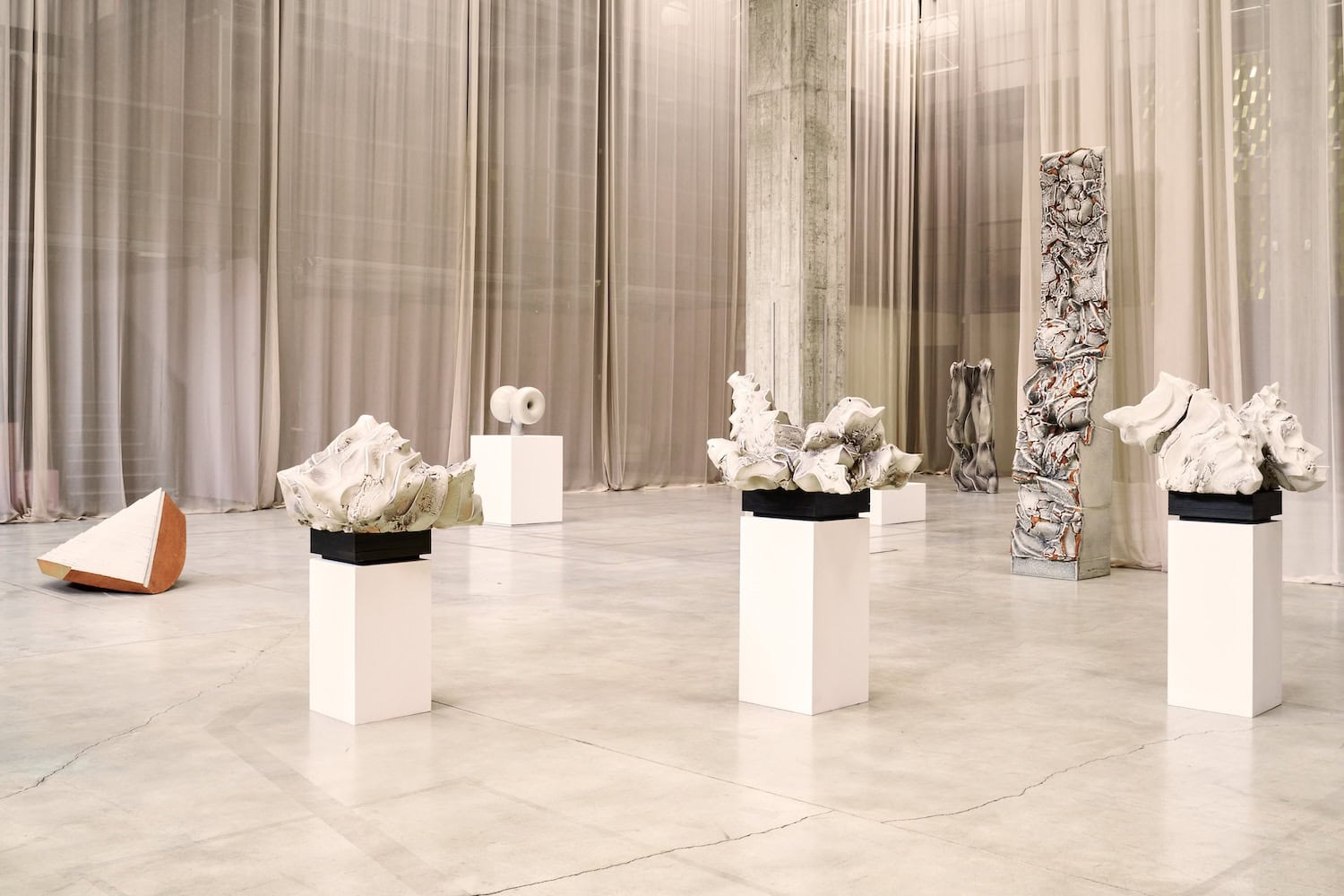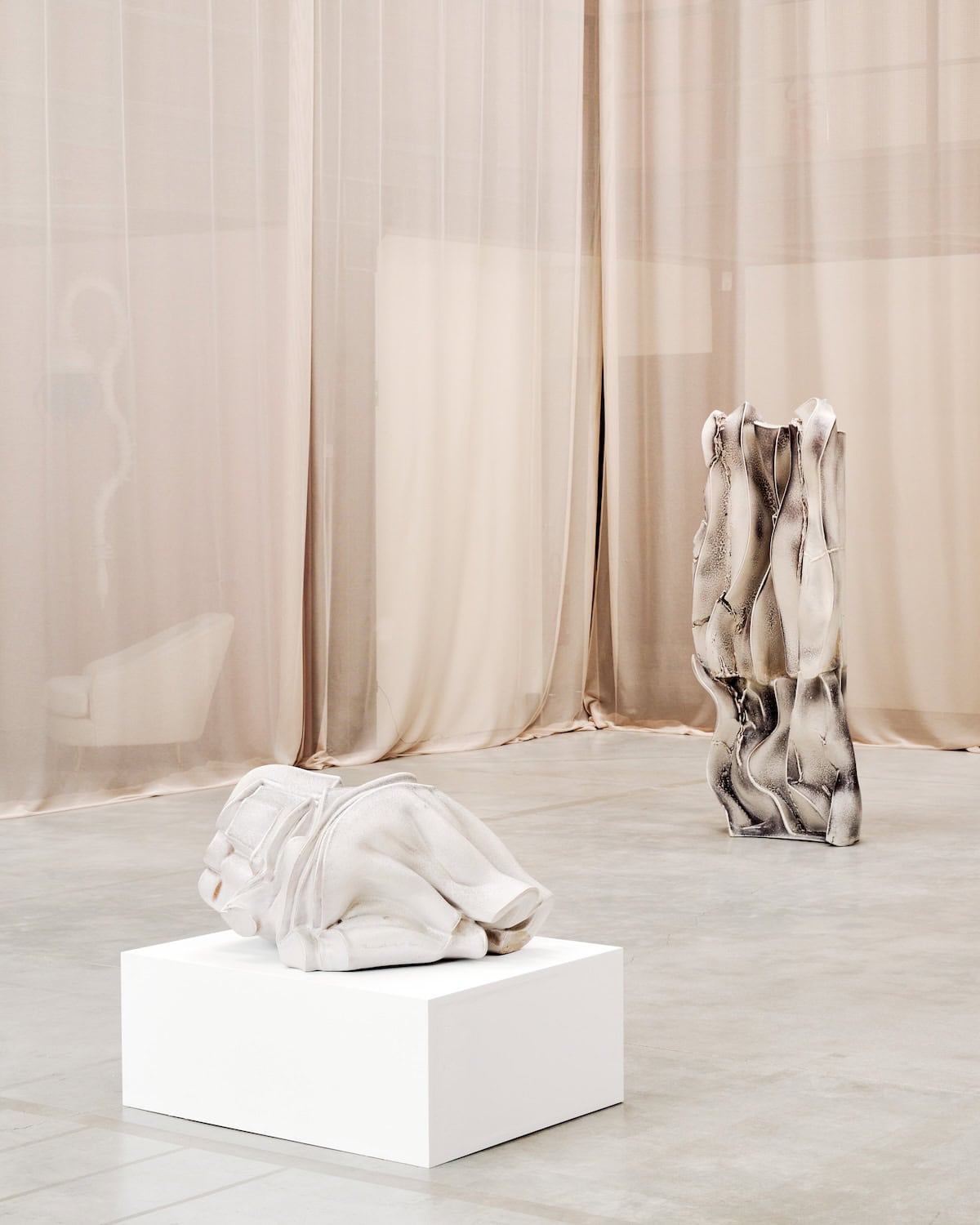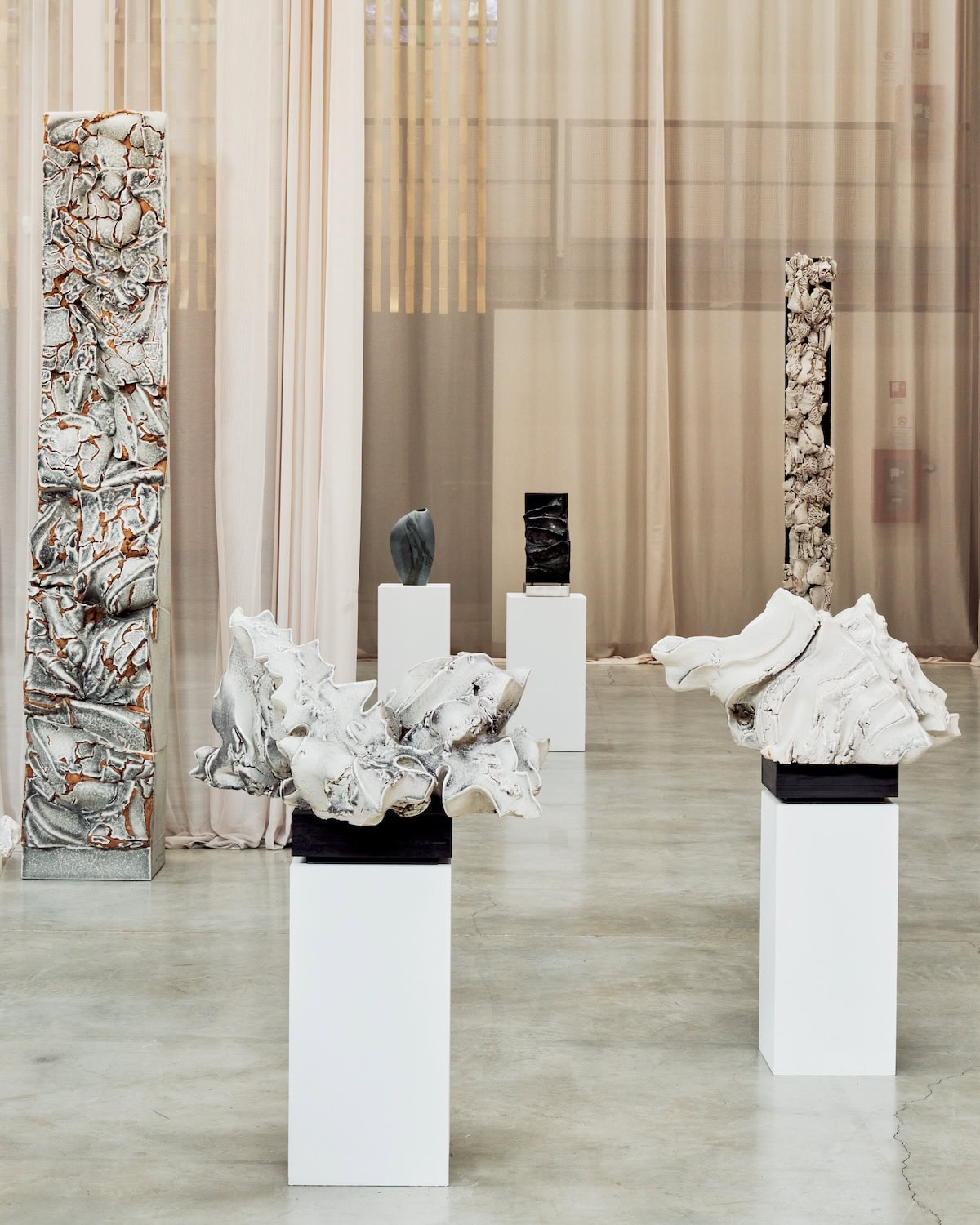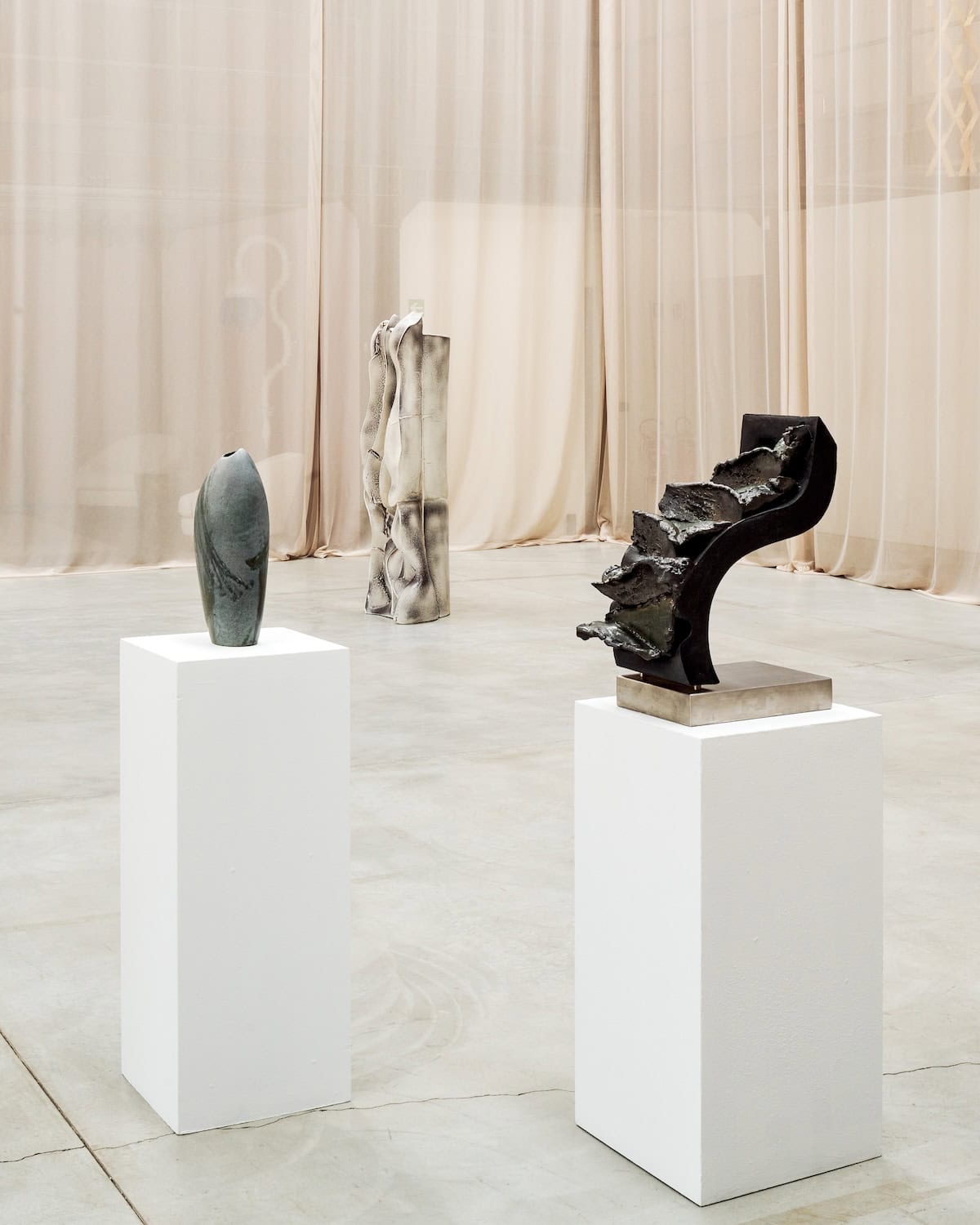Nilufar opens a solo show in Viale Lancetti 34 (Milan) presenting the work of Carlo Zauli, a ceramic artist born in Faenza (Italy) in 1926. After winning the main awards dedicated to ceramic art in the 1950s, the early 1960s saw Zauli evolve towards a markedly sculptural interpretation of his craft. During this time, his own artistic language matured, imbued with an informal character, and intertwined with a harmonious yet disruptive “naturalness”: these are the years of his growing international success. Since 1958, the year in which the great reliefs of the palace of Baghdad and the government printing office in Kuwait City were built, his fame grew continuously until, throughout the 1970s and 1980s, it reached all of Europe, Japan, and North America, where he held exhibitions and installed permanent displays of his works.
Nina Yashar and Museo Carlo Zauli have collaborated for the curation of a selection of art pieces that span the most representative sculptural periods of Zauli’s career, from the best known to many others never before presented to the public.
The exhibition highlights Nilufar’s role as a cultural promoter of exhibitions tracing the careers of historic artists. The works on display narrate the sculptural period from the 1950s, the beginning of Carlo Zauli’s career, to the 1980s. This is a significant occasion to celebrate the artist and the Carlo Zauli Museum, opened by the family in his first studio in Faenza in 2002 to protect and disseminate his art.
The exhibition is on view until February 25th, 2024.
Ilaria Sponda: Hi Nina, thank you for having us today on the occasion of the opening of Carlo Zauli’s exhibition at Nilufar Depot. This place is fascinating. May you briefly introduce the story of Nilufar Depot?
Nina Yashar: Nilufar Depot has a peculiar energy I can’t describe. It’s open since 2015, whether my gallery opened in 1979. The first gallery was in Via Bigli in Milan and it lasted for 12 years. I moved it to Via Spiga, where you can still find it. Nilufar Depot came about for practical needs. I started searching for a warehouse where to store my collection in Milan in 2013. This place was a silverware showroom before. Massimiliano Locatelli took care of the redesign of the space, inspired by Teatro alla Scala’s galleries. This place has its Functionality as the railings can be removed from the floor. From the very beginning, Nilufar Depot has been a stage for my interpretation of contemporary art and design. When I inaugurated the space with a dinner and 150 guests I was told by many that it was not a good idea to keep it as a warehouse. It turned out to be a second space where I could express myself with exhibitions that I would not have been able to curate in a small space such as the gallery. You can’t promote culture without a space. At the beginning, I wasn’t aware of it but with time I understood the plus given to Nilufar by this place.
IS: Yes, it’s a plus and a kind of theatre where people can take part in the play together with the pieces exhibited.
NY: I love sharing my perspective on art. The gallery in Via Spiga wasn’t allowing me to express my passion for cultural research fully. The first exhibition was in 2021: I presented Pietro Consagra’s artworks rather than his design pieces, which would have been banal. I chose to exhibit his “Matacubi” as they are sculptural works that wink to design.
IS: You indeed seem to privilege exhibiting less known works by designer and show their artistic work and research.
NY: I’ve always had a passion for shedding light on less-known aspects of design. I don’t find any challenge in presenting what’s already known to people. In the case of Zauli’s exhibition, for example, I had the great chance of meeting his son Matteo when I visited the museum in Faenza two years back. I was immediately struck by the steles for their perceived sacrality.
IS: How did you discover Zauli’s art?
NY: It happened thanks to a friend who that insisted for me to consider him. When I finally went to visit the Museo Carlo Zauli I did so as I was already going to Faenza to visit the laboratory producing the largest 3D prints in Italy, and I went with artist Audrey Large. I was really drawn to his art by then, and being able to have the support of the museum to produce this exhibition was essential to elevate the relevance and prestige of this cultural gesture.
IS: Ceramic is present in nowadays art and design culture. Was your choice of bringing to the forefront Zauli’s ceramics dictated by the trend itself?
NY: Ceramic is extremely trendy in the current times. I think that choosing to present an artist like Zauli is the right cultural gesture. He left a mark in the field of ceramic art of the 20th century. It’s the relationship between the artist and the material to be at stake here. His works are like living beings inhabiting Nilufar Depot’s space. I appreciate the way the stoneware was treated on ceramic at 1200 degrees, his special and secret recipes, in his soon’s words. This treatment gives life to the “Zauli’s white”. I’ve never been fond of ceramic as I’ve never been fond of objects. Ceramic is mainly used for objects. My point has been that of finding functional objects made in ceramic. I started getting interested in this now-trendy material when I met Anestis Michalis, Greek figurative artist. I appreciate the joyfulness and materiality of his pieces. From there, I only got back to ceramics with Zauli’s works, not because it’s a trend but because my research and personal taste brought me there. My approach is instinctive rather than logic and programmed. The only guideline that my research is presenting–and I’m realising it now that I speak–it’s my current obsession with white. There’s a thin line connecting this exhibition and the two previous showcasing Gabriella Crespi’s and Objects of Common Interest’s work.
